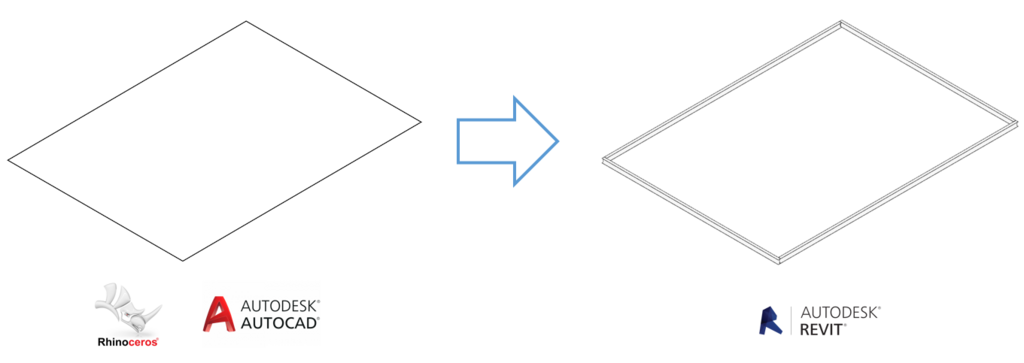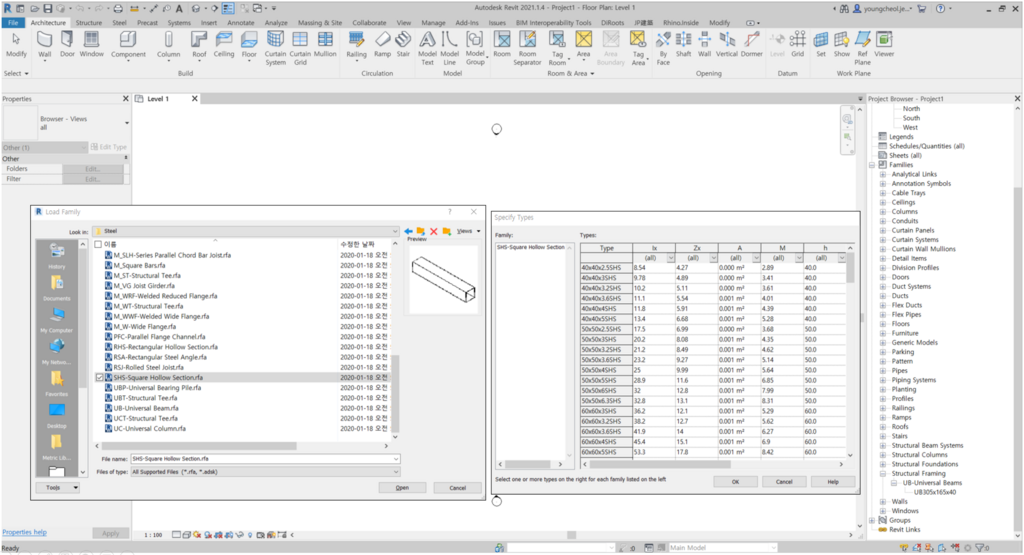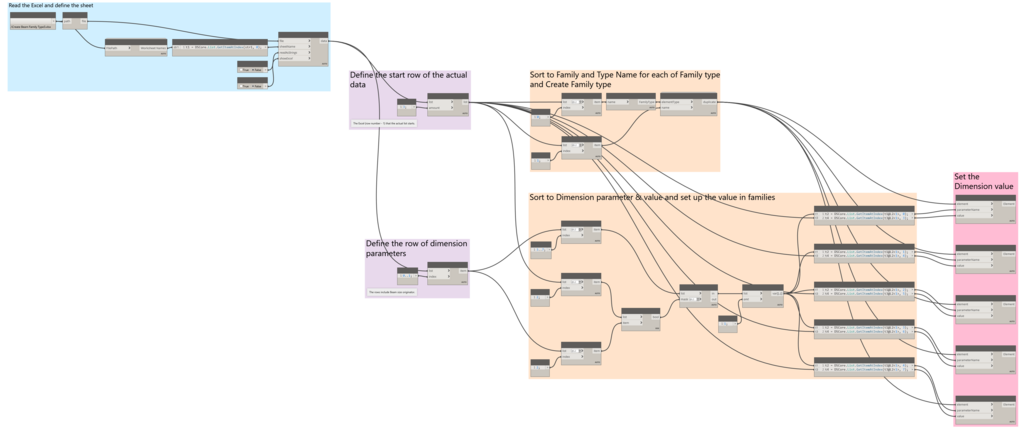Create multiple family types of beam in Revit using Dynamo
Many people around the world in various fields do not use a single BIM authoring tool only and there are plenty of data collaborations between BIM authoring tools for example Rhinoceros or Autocad <-> Revit.
Recently, I conducted a lot of researches and tests on how to link or collaborate between different BIM authoring tools. In particular, to create structural beams, MEP pipes, or ducts using lines created by Rhinoceros or Autocad.
Unfortunately, in this article, it is not the topic to use Dynamo to do the above things. What I am going to introduce at this time is a problem that has occurred repeatedly while proceeding with the above-mentioned contents.
Let’s think of Structure or MEP modeling is carried out the other BIM authoring tool and the designed data converts into Revit’s elements. (Figure 1)
As the design progresses or the LOD of each design stage increases, more beam types, pipe types, and duct types will increase, and even when each type of size changes, it will be necessary to manually add the family type in Revit or modify the parameters of any existing family.
Let’s find out how to create multiple family types of structure framing (Beam) in Revit using Dynamo.
Here is the software version I used in this article.
- Revit version 2021,
- Dynamo 2.6.1,
- Excel.
Set up Revit Project & Revit Family
Create the new Revit project and select the proper beam families that will be used for the project and load into the Revit project.
After adding the necessary families, set up the name for each of families referring to the BEP or Family Naming system of the project and also, set up the parameters of beam.
In this article I will follow ‘Figure 4’ and check the result ‘Figure 5’
In order to use the Dynamo I made, at least one family type is required for each family like ‘Figure 5’, and it must be set to the same parameter’s name as the parameter’s name of the ‘Figure 4’.
Create the Beam List
In the Dynamo script, I will read the excel file -Figure 6- and use the data to create multiple types.
- Family Name is an item that defines which beam family to use,
- Type Name is an item that defines the type name of a family,
- Beam Type is an item that defines the dimension parameters of each beam,
- Beam Size is an item that defines the value of dimension,
- Sheet Name of excel is an item that defines which sheet to use in Dynamo.
Create Multiple Family Type of Beams
Here is the overall script I made, the script is all composed of OOTB nodes except for using a node of Data-shapes and Clockwork one each.
Let’s run this Dynamo and check the result.
I think the key point is to understand the structure of data, which is considered the most important, and to organize and integrate it appropriately.
Also, this script can be effective if it is used appropriately in a way that collaboration between different BIM authoring tools such as lines created by Rhinoceros or Autocad to Revit elements and additionally new family types are added as the design progresses.
I hope with this idea, even structural beam, most families’ types (Pipe, Duct, etc.) in Revit can be created using Dynamo if you set up as I introduced in this article.
For more information and if want to get this Dynamo script and other materials, please contact here.







